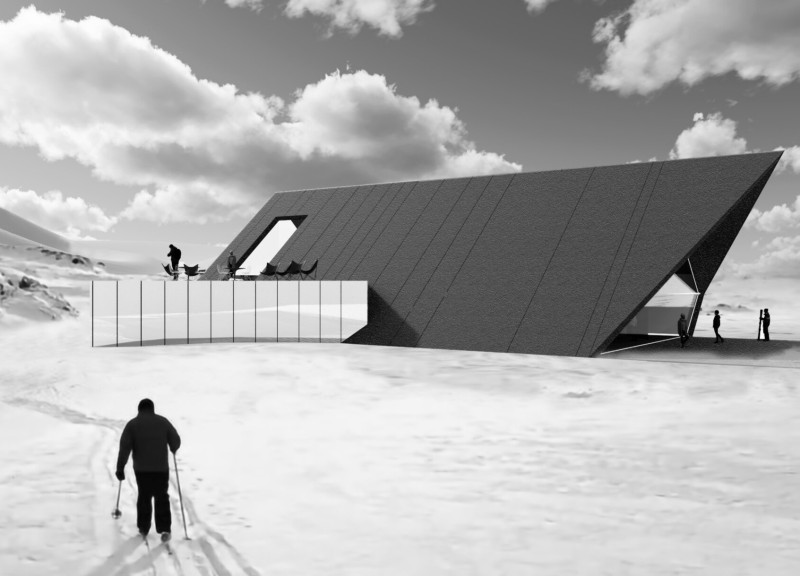5 key facts about this project
From a design perspective, the architecture is characterized by clean lines and an emphasis on open spaces that promote natural light and airflow. The facade utilizes a combination of materials such as glass, concrete, and steel, which collectively articulate a modern yet inviting presence. The transparent nature of the glazing contributes not only to the building's energy efficiency but also encourages an interaction between the interior and exterior environments, inviting the community to engage with the space.
One of the notable elements of this project is its commitment to sustainability. The incorporation of green roofs, rainwater harvesting systems, and efficient insulation materials helps reduce its ecological footprint. Landscape design also plays a vital role, with native plant species selected to enhance biodiversity while minimizing maintenance needs. These strategic choices reflect a broader commitment within the architecture to promote environmental stewardship.
As one navigates through the spatial organization of the building, the careful arrangement of areas fosters both functionality and a sense of community. Public spaces are thoughtfully placed to encourage social interaction among users, while private areas remain accessible yet distinct, ensuring a balance of privacy and openness. The choice of materials reflects this intent, with warm textures in the interior design that invite comfort and relaxation.
Unique design strategies further enhance the architectural narrative. For instance, the use of modular components allows for flexibility in use and adaptability in the face of changing needs. This approach not only maximizes usability but also keeps construction costs manageable without compromising on quality. Additionally, the building's integration of technology—such as smart systems for lighting and climate control—demonstrates an awareness of contemporary living styles, catering to a society increasingly reliant on digital connectivity.
Furthermore, the project places significant emphasis on outdoor spaces, which are treated as extensions of the indoor environments. Balconies, terraces, and common areas promote a cohesive relationship with nature, encouraging occupants to utilize these spaces as part of their daily lives. Incorporating elements such as walking paths and seating areas within landscaped gardens enhances the overall experience, creating an inviting atmosphere for both residents and visitors.
In summary, this architectural project not only addresses the immediate needs of its users but also reflects broader themes in contemporary design. Through thoughtful material choices, engaging spatial organization, and a commitment to sustainability, it stands as a noteworthy example of modern architecture that harmonizes with its environment. For those interested in delving deeper into the configuration and specifics of this design, exploring the architectural plans, sections, and innovative ideas would provide valuable insights into the underlying concepts that shaped this project. Engaging with the detailed aspects of the design will enhance understanding and appreciation of the architectural principles at play.


























